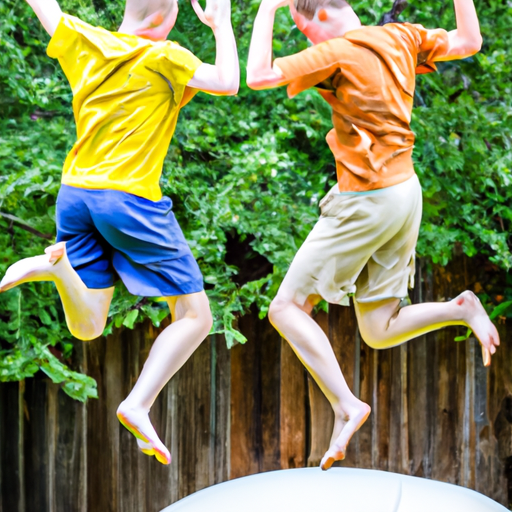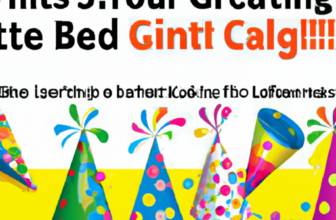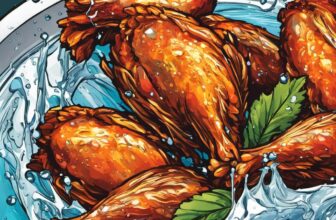
Bringing your little one home after pest control is a common concern for many parents. We all want our babies to be safe and protected, and ensuring a pest-free environment is essential. But when can you confidently bring your baby back to their cozy nursery? This article aims to provide you with the information you need, addressing the question of how long after pest control it is safe to bring your baby home. So, let’s put your worries at ease and find out the recommended waiting period for a pest-free and worry-free homecoming for your little bundle of joy.
Factors to Consider
When it comes to pest control and the safety of your baby, there are several factors to consider. It’s important to understand the type of pest control used, the severity of the infestation, the type of products used, the ventilation in your home, and the exposure of your baby to pesticides. By taking these factors into account, you can make informed decisions that prioritize the well-being of your little one.
Type of Pest Control Used
The type of pest control used is a crucial factor to consider when it comes to the safety of your baby. There are two main types of pest control: chemical and natural or non-chemical. Both methods have their own advantages and considerations, so it’s important to understand them before deciding on the best approach for your home.
Severity of Infestation
The severity of the infestation is another important factor to take into consideration. Is the infestation mild, moderate, or severe? This factor will determine the intensity and duration of the pest control measures needed to address the problem. It’s essential to assess the severity accurately to ensure effective pest control without compromising your baby’s safety.
Type of Products Used
Understanding the type of products used in pest control is critical when it comes to your baby’s safety. There are residual pesticides, which leave a lasting effect, and non-residual pesticides, which have a more temporary impact. Each type of product has its pros and cons, and it’s important to weigh them against your baby’s well-being.
Ventilation in Your Home
Proper ventilation is an essential aspect to consider during and after pest control treatments. When utilizing chemical-based pest control methods, ensuring good airflow is crucial. By opening all windows and doors, you allow fresh air to circulate and minimize potential risks. In addition to natural ventilation, using fans or air circulation devices can aid in maintaining a well-ventilated environment for your baby.
Exposure of Baby to Pesticides
Minimizing your baby’s exposure to pesticides is paramount for their safety. Taking precautions such as cleaning and ventilating the nursery, washing baby’s clothes and bedding, and avoiding direct contact with treated surfaces can significantly reduce the risk. By understanding and implementing these measures, you can provide a safer environment for your little one.
Types of Pest Control
Now that we have discussed the crucial factors to consider, let’s dive deeper into the two main types of pest control: chemical and natural or non-chemical methods. Each approach has its own benefits and considerations. Let’s explore them further to help you make an informed decision.
Chemical Pest Control
Chemical pest control involves the use of various chemical compounds to eliminate pests. These chemicals can come in various forms, including liquid-based pest control, fumigation or tenting, and sprays and aerosols.
Liquid-Based Pest Control
Liquid-based pest control methods involve the application of liquid pesticides to targeted areas. These pesticides are usually diluted with water and applied using sprayers or other specialized equipment. This method is effective in treating specific areas and can be particularly useful for targeting crawling insects.
Fumigation or Tenting
Fumigation or tenting is a process that involves sealing off the entire structure and releasing a gas or fumigant into the enclosed space. This method is typically used for severe infestations and can effectively eliminate a wide range of pests. However, it requires careful preparation and evacuation of the premises, including your baby, during the treatment process.
Sprays and Aerosols
Sprays and aerosols are common pest control options that you might encounter. They involve the application of pesticide liquids or aerosols directly onto surfaces or into the air. These products can be used for both targeted and general treatments, depending on the nature of the infestation. It is important to follow the instructions carefully and exercise caution when using these products around your baby.
Natural or Non-Chemical Pest Control
Natural or non-chemical pest control methods aim to address infestations using non-toxic or low-toxicity alternatives. These methods prioritize environmental and human safety while effectively eliminating pests. Let’s explore some popular natural pest control methods.
Traps and Baits
Traps and baits offer humane alternatives to chemical pest control. They are typically used for specific pests such as rodents and insects. Traps can either catch pests alive or eliminate them instantly, depending on the design. Baits, on the other hand, lure pests into consuming a toxic substance that ultimately eradicates them.
Biological Pest Control
Biological pest control involves the use of living organisms such as insects, pathogens, or animals to control pest populations. For example, releasing ladybugs to control aphids or using nematodes to combat soil-borne pests can be effective and environmentally friendly methods. Biological pest control can provide long-term solutions and reduce reliance on chemical treatments.
Heat or Cold Treatments
Heat and cold treatments are non-toxic alternatives that can effectively eliminate pests. High temperatures or extreme cold can disrupt the biological process of pests, resulting in their demise. These methods are particularly useful for certain types of infestations and can be a viable option when considering the safety of your baby.
Severity of Infestation
The severity of the infestation plays a crucial role in determining the appropriate pest control measures. Let’s explore the three different levels of infestation and the actions that can be taken for each.
Mild Infestation
Mild infestations typically involve a small number of pests or limited activity. In such cases, targeted treatments or natural pest control methods may be sufficient. Traps, baits, and non-chemical remedies can often effectively control mild infestations without requiring extensive or prolonged treatments.
Moderate Infestation
Moderate infestations indicate a larger population of pests or increased activity. This level of infestation may require more comprehensive measures, such as chemical treatments or the combination of natural and chemical methods. It is crucial to assess the potential risks to your baby and consult with pest control professionals to determine the best course of action.
Severe Infestation
Severe infestations are characterized by a massive population of pests and extensive damage. In these cases, more aggressive pest control measures, such as fumigation or tenting, may be necessary. When faced with a severe infestation, it is crucial to prioritize the safety of your baby by following recommended evacuation protocols and seeking professional advice.
Type of Products Used
Understanding the type of products used in pest control is essential to make informed decisions regarding the safety of your baby.
Residual Pesticides
Residual pesticides are long-lasting substances that leave a residue on treated surfaces. This residue continues to provide pest control effects for an extended period, ensuring ongoing protection. However, it’s important to note that these products may require sufficient ventilation to dissipate odors and potentially harmful residues. Consulting with professionals can help you determine the best course of action for using residual pesticides in your home.
Non-Residual Pesticides
Non-residual pesticides, also known as contact or knockdown pesticides, offer temporary control by directly targeting pests upon application. These products do not leave long-lasting residues, which can be advantageous in certain situations. However, it is essential to consider the potential risks associated with using these products in areas accessible to your baby. Following safety guidelines and consulting with professionals can help minimize any potential hazards.
Ventilation in Your Home
Ensuring adequate ventilation in your home during and after pest control treatments is crucial for your baby’s safety. Proper airflow helps dissipate any lingering odors or potential toxins, creating a healthier environment. Consider the following ventilation methods to maintain a well-ventilated space for your baby:
Open All Windows and Doors
Opening windows and doors allows fresh air to circulate throughout your home. This helps in flushing out any potentially harmful residual chemicals or odors from the pest control treatments. However, it’s essential to ensure the safety of your baby while doing so, especially if they are mobile or near uncovered windows.
Use Fans or Air Circulation Devices
In addition to opening windows and doors, using fans or air circulation devices can enhance airflow and promote ventilation. These devices help in dispersing any lingering fumes or odors, increasing the effectiveness of ventilation in your home. Positioning fans strategically can further aid in maintaining a well-ventilated environment for your baby.
Exposure of Baby to Pesticides
Minimizing your baby’s exposure to pesticides should be a top priority when undergoing pest control treatments. By implementing the following measures, you can significantly reduce their risk of exposure:
Minimizing the Baby’s Exposure
During and after pest control treatments, it’s important to minimize your baby’s exposure to pesticides. Keep them away from the treated areas as much as possible, and ensure they are not in direct contact with any chemical residues. By implementing a temporary barrier or keeping them in a different part of the house, you can create a safe space for your baby.
Cleaning and Ventilating the Nursery
Thoroughly clean and ventilate your baby’s nursery after pest control treatments. Wipe down all surfaces, including furniture, toys, and bedding. Properly ventilate the room by opening windows and using fans to improve airflow. Regular cleaning and ventilation will help remove any residual chemicals and ensure a clean and safe nursery space.
Washing Baby’s Clothes and Bedding
Washing your baby’s clothes and bedding after pest control treatments is essential to remove any potential pesticide residues. Use a gentle, fragrance-free detergent and rinse thoroughly to ensure you eliminate any lingering chemicals. Dry the items in a well-ventilated area or outside to further mitigate the risk.
Avoiding Direct Contact with Treated Surfaces
Avoid direct contact between your baby and any surfaces that have been treated with pesticides. This includes floors, walls, or furniture that may still have residual chemicals. Place a barrier, such as rugs, blankets, or temporary covers, to prevent your baby from touching or crawling on these surfaces until you are confident they are safe.
Professional Advice
When it comes to the safety of your baby and pest control, seeking professional advice is highly recommended. Pest control experts are trained to assess the situation, determine the most appropriate methods, and provide recommendations tailored to your specific needs. Consider the following when consulting with professionals:
Consult Pest Control Experts
Reach out to reputable pest control experts who have experience with infant and child safety. They can assess the severity of the infestation, recommend suitable pest control methods, and provide guidance on minimizing risks to your baby.
Follow the Recommendations of Pest Control Professionals
Once you have consulted with pest control professionals, it is important to follow their recommendations closely. They have the expertise to identify the best course of action based on the specific circumstances of your infestation and the safety of your baby.
Ask for a Re-Entry Time Estimate
Before returning to your home after pest control treatments, ask for a re-entry time estimate from the professionals. This will give you an idea of how long you should keep your baby away from the treated areas. Following their guidelines ensures that you maintain the highest level of safety for your little one.
Conclusion
Considering the various factors associated with pest control and your baby’s safety is paramount. By understanding the type of pest control used, the severity of the infestation, the type of products used, the ventilation in your home, and the exposure of your baby to pesticides, you can make well-informed decisions that prioritize your baby’s well-being. Consulting with professionals and following their recommendations will further ensure a safe environment for your little one. By taking proactive measures and considering all aspects, you can effectively address pest infestations while keeping your baby’s safety at the forefront.







